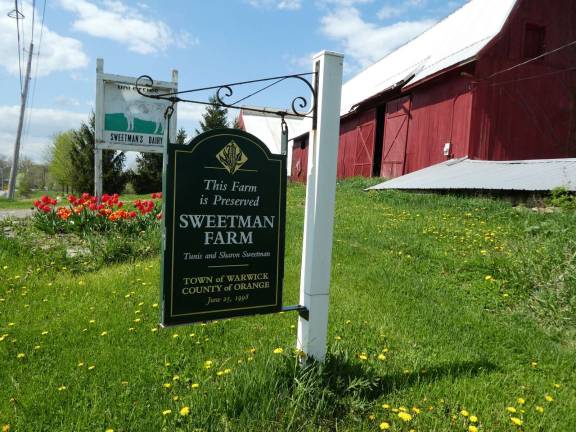Regional report touts the benefits of open space

By Linda Smith Hancharick
WARWICK — The Town of Warwick has been proactive in preserving open space and farmland for 20 years now, starting its effort in 1998 when voters approved borrowing $9.5 million to purchase development rights to working farms.
In 2006, voters again gave their approval for the town to institute a Community Preservation Fund Transfer Tax, a real estate transfer tax of three quarters of one percent.
Those funds continue the town’s preservation of open space.
A tremendous assetRecently, the Regional Planning Association and SUNY New Paltz completed a study of the value of open space conservation efforts in the Hudson Valley and determined that open space provides a tremendous asset to the region in multiple ways.
“The most obvious benefits of open space and its protection are reflected in the environmental value it ensures,” notes the study. The benefits are demonstrated “through ecosystem services and other measures concerning land, air and water.”
“Open space provides critical environmental and economic resources for the entire New York metropolitan region,” according to the report. “These natural systems’ ability to cool the region and absorb storm and field water are making them increasingly valuable.”
Preservation of local landTown of Warwick Supervisor Michael Sweeton has been a proponent of preserving open space throughout his 16 years of leading Orange County’s largest town. He said two benefits noted in the report really resonated with him: water quality and biodiversity.
“The number one benefit is preserving our water quality, especially since it’s becoming more and more scarce,” said Sweeton.
The report says, “Protected landscapes have improved the quality of our air and water, nurtured biodiversity, allowed for the production of more local foods and given residents and visitors the gift of beautiful landscapes.”
The town has benefited economically from preserving open space, Sweeton added. Keeping working farms viable benefits the entire local economy.
When development rights are purchased, these working farms remain on the tax rolls without the chance of residential development.
“Agriculture is our largest economic sector,” said Sweeton. “These farms are not tax exempt – they remain on the tax rolls. It’s been a boon for us, paying dividends every single day. It’s a home run.”
Residential development does not pay for itself, Sweeton said. Not having as much development has certainly helped the town.
Property purchased by land trusts has come under fire because land trust purchases take properties off the tax rolls.
The study, though, notes that in the Mid-Hudson region, property owned by land trusts is less than one percent of all exempt properties.
The property tax cap enacted in 2012 has been a disincentive for municipalities to protect open space since the funds count as expenditures in the tax cap formula.
The authors of this study recommend the state revise the tax cap formula to remove disincentives for municipalities that have gained voter approval to bond for funding to protect open space.
Health benefits, tooThe study also says that among the assets of open space in the region are benefits to residents’ health.
“Open space provides a tremendous asset to our region in multiple ways that are both obvious and imperceptible,” the study reports. “It’s the calming walks we take in the woods, the drinking water that reliably flows from our taps, the clean air we breathe, the local food we purchase, the stored carbon and captured field waters in a changing climate.
"Without proper protection, all of these assets are at risk of being degraded or diminished.”
Decades of land stewardship pays offWarwick has been at the forefront of being stewards of the land. With programs in place since approved by the voters in 1998, the Town of Warwick has preserved 3,997 acres of land – most working farms - with another farm about to be added next month.
A big part of the success of Warwick’s preservation program is the money available through its Community Preservation Fund and the original referendum.
“Both of these allowed us to be competitive in obtaining grant money,” said Sweeton, noting that many of the grants available required 50 to 75 percent matches from municipalities. “We had the money to make the match.”